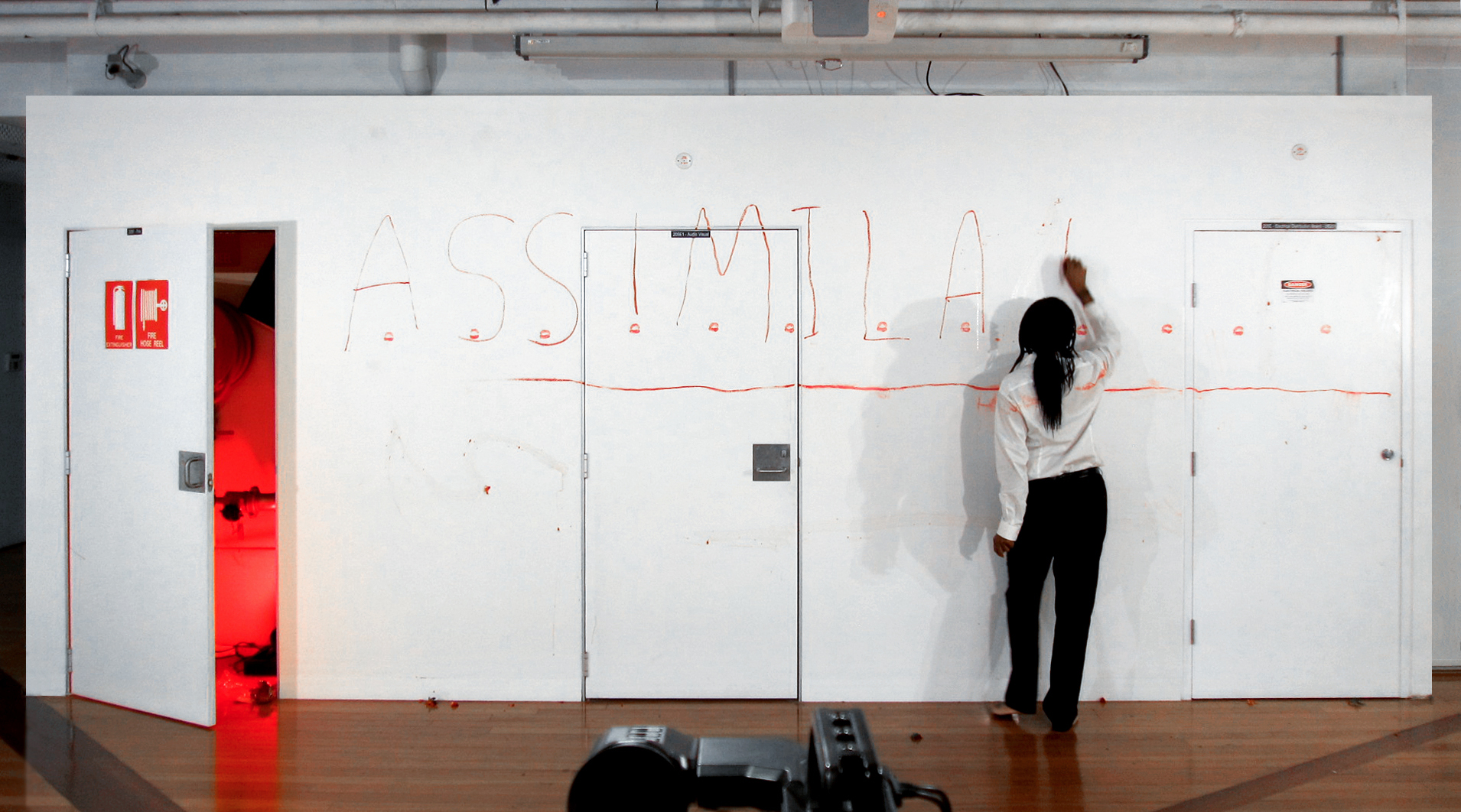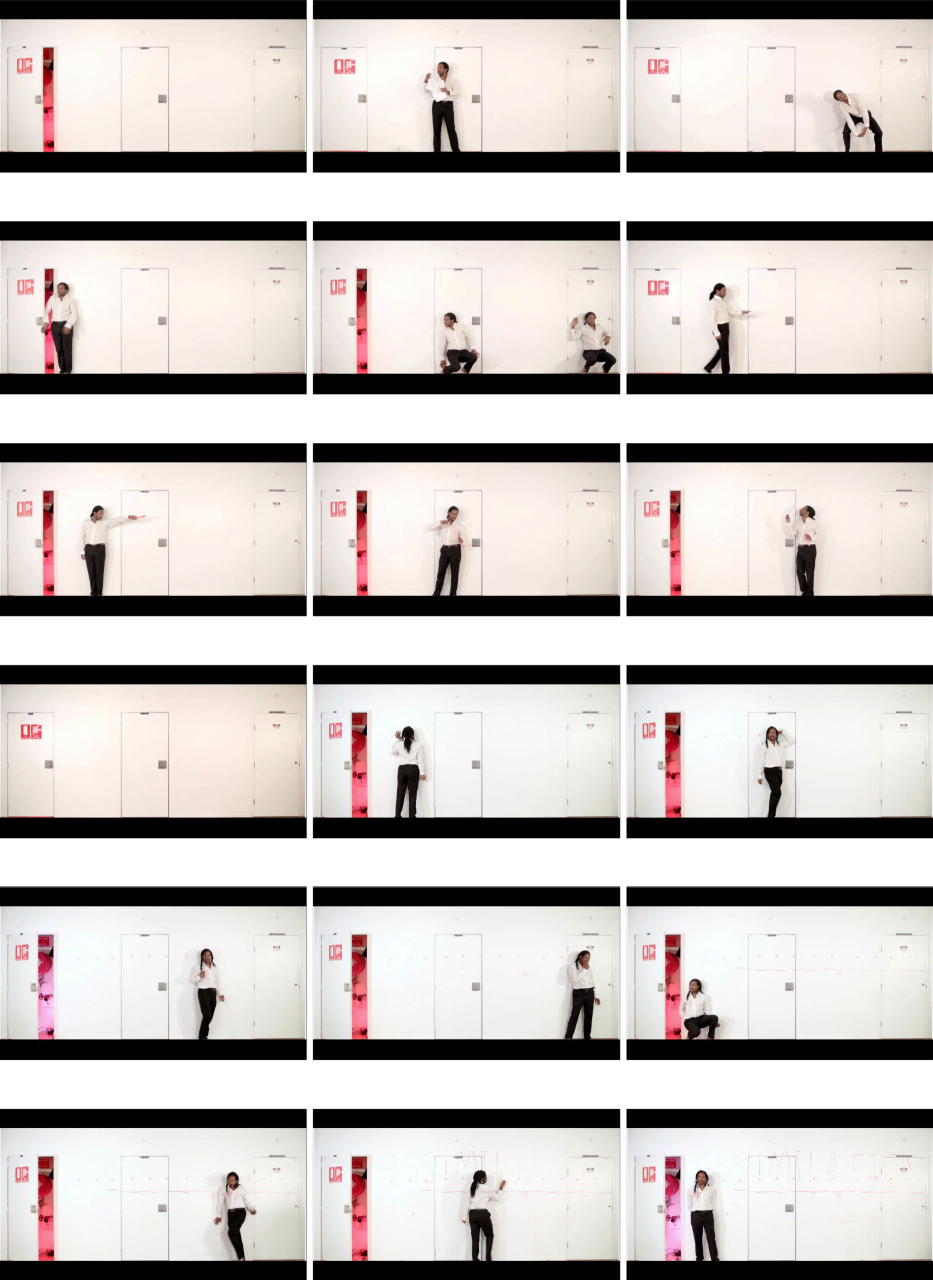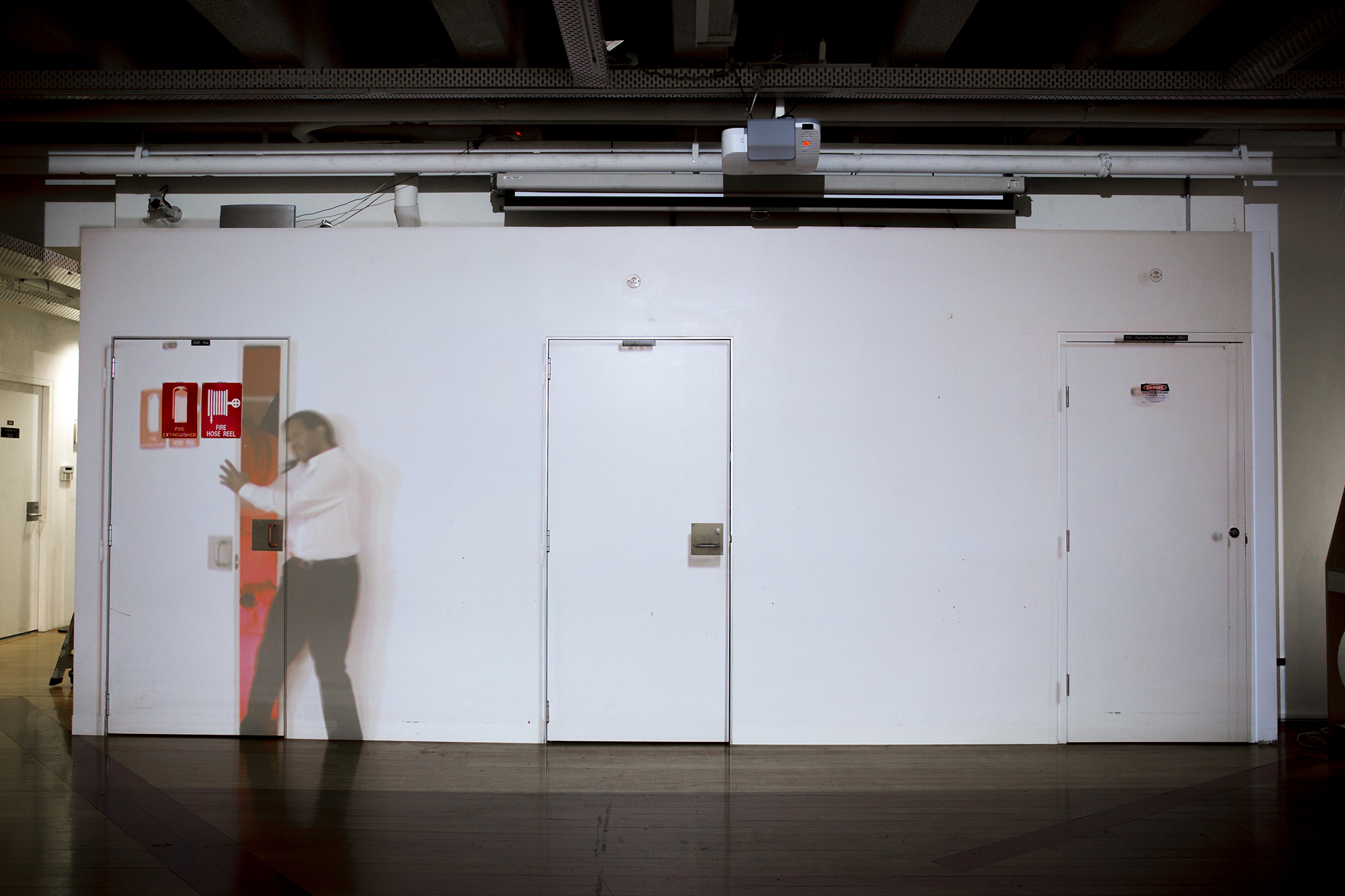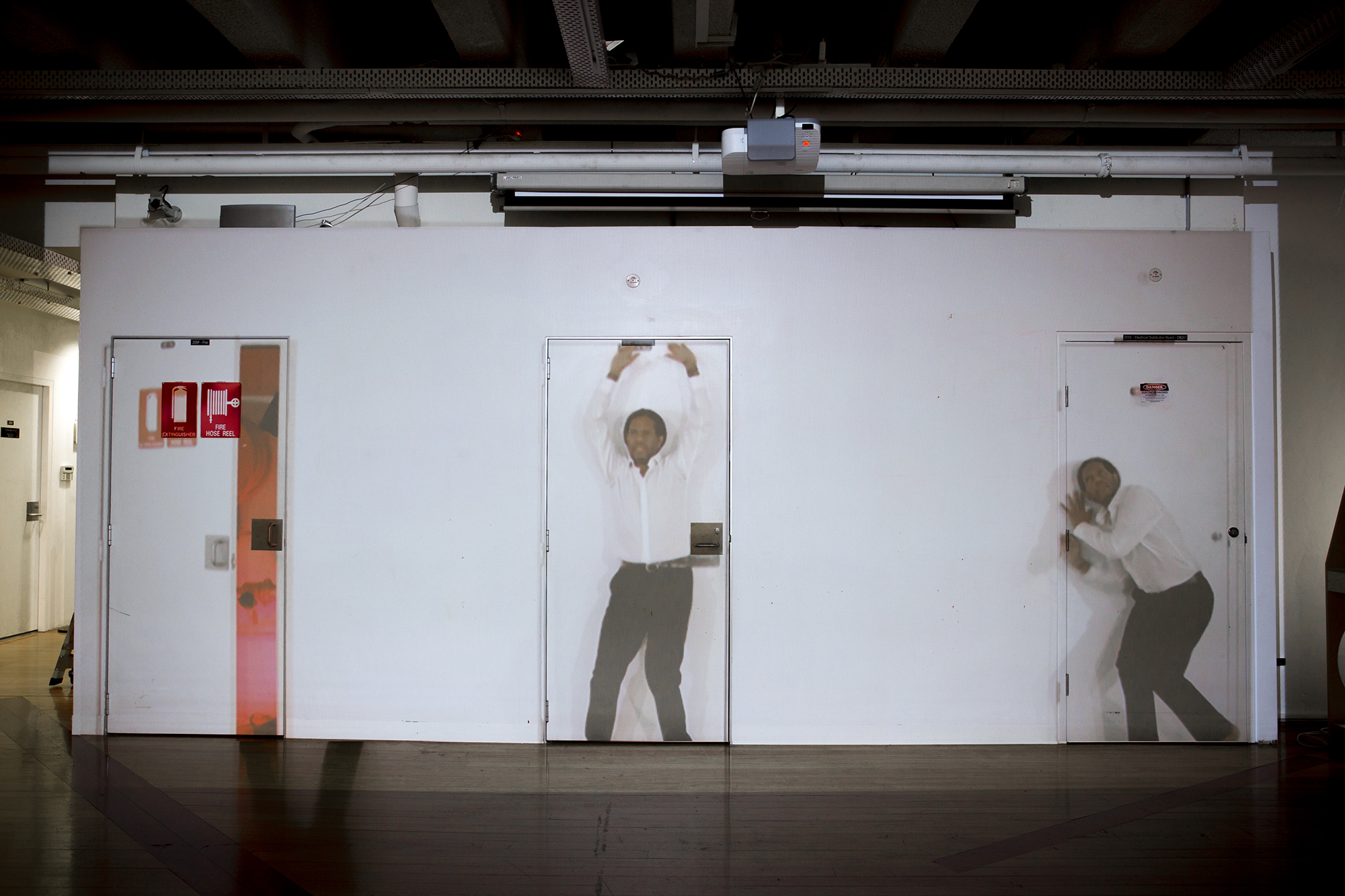Revel after the Curfew is a collective and trans-disciplinary artwork that critically portraits the death of Sydney’s nightlife and brings some of the rites and absences of the night to the monumental manifestation of its end. First exhibited in 2018 at the Tin Sheds Gallery (as part of the first Australian Design Research conference), it aimed to generate the appropriate conditions for a collective confrontation with its regulated sacrifice in the name of public order and real estate markets.
Party venues do not constitute an architectural typology; instead, they conform ephemeral archipelagos of relational spaces and synthetic atmospheres that take over spaces and transform them into temporary heterotopias. They are spaces of illusion where the “homo faber” becomes a temporary “homo ludens” aided by the implementation of hedonistic experiences, purification rituals, uncontrolled interactions, and loss of inhibition.
Revel after the Curfew is an architecture-object and an art-device; a dirty nightclub and a dark cenotaph; a synesthetic instrument and a synthetic atmosphere.
As a nightclub, it reproduces some of the atmospheres and rituals expelled from “what used to be” Sydney’s nightlife and stimulates the cultural diversity, hedonistic excess, unprofitable ugliness and unpredictable behaviours that characterised unregulated nights. As a cenotaph, it becomes the definitive manifestation of the assassination of Sydney’s nightlife. The physical presence of the cenotaph makes possible a shared acceptance of this “necessary disappearance”. The synthetic and synesthetic combination ‘nightclub-cenotaph’ makes radical use of the material, ritualistic, aesthetic and representational capacities of architecture to articulate bodies, absences, discourses, traces, and memories.
A central element of the artwork was an improvised performance inspired by some of the most absurd passages extracted from the lockout laws. It was executed with Dadaistic irony by artist and dancer Bana Hankin. In an act of calculated profanation, Bana kissed and wrote the word ASSIMILATION onto the wall with red-lipstick. It was an assertive act to denounce that lockout laws are just another step in a perpetual process of cultural assimilation and colonization of desires and behaviours.
The original idea for the exhibition was to project during the opening the video of the performance onto the wall, at a 1-to-1 scale. Allowing for a perfect alignment between physical space and digital projection, the phantasmagorical presence of the recorded performance would coincide, in a looped atemporality, with the red-lipstick material traces left by the dancer.
Unfortunately, the word and kisses were erased the following morning at the request of the curatorial team and without previous consultation with the artists. The whiteness of the wall recovered its unspoiled institutional condition. Paradoxically, an artwork that criticised the censoring of difference and dissonance in the behaviours of bodies in the city was itself censored, thus incorporating the erasure as the ultimate material evidence of a negative attainment.









